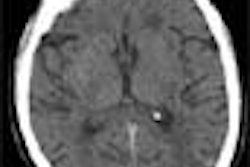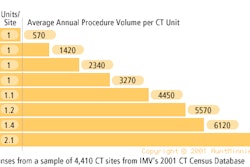CHICAGO - When radiologist and collector Dr. Steven Sirr considers paying $20,000 for a rare Japanese netsuke, he takes it to his CT machine and scans it to be sure he's getting what he pays for.
The scans can detail repairs, carving styles and can help the serious collector avoid forgeries, Sirr said Wednesday at the RSNA meeting.
Similarly, Roel Jansen uses the CT machine at the Academic Medical Center in Amsterdam to probe ancient books for evidence of binding techniques and clues to authenticity -- without having to physically handle books sometimes worth hundreds of thousands of dollars.
The CT scan, he said, is sensitive enough that pictures inside the book colored with paints made of heavy metals are clearly visible through the cover.
"While we didn't see this with the 30 books we have examined," Jansen said, "it is also possible to see the writing inside the book if the monks wrote with inks containing metals."
He said that some parchments used on the inside covers of the books are recycled, and the writing on the inside of the parchment can be read during a scan. The CT also can identify reused covers where nail holes have been plugged, and book covers that look like wood but are actually cheaper composites.
Jansen and Sirr said they use CT devices in their radiology departments of their institutions during off-hours. "The number of scans we take to look at a book," Jansen said, "is insignificant when compared to the number of scans taken of a patients."
Sirr, a radiologist at Abbott Northwestern Hospital in Minneapolis, Minn., has been using CT to investigate antiquities – particularly, master-crafted violins -- for several years.
He said use of CT to investigate netsuke – highly collectible Japanese art forms -- provides considerable information. "CT non-invasively visualizes the internal structure of netsuke giving the modern artists clues to carving techniques used by the masters," he reported in his poster presentation. "CT also detects the extent of the internal damage and its subsequent repair. In case of theft, CT provides a unique 'fingerprint' of internal wood grain patterns."
Sirr noted that netsuke are displayed in museum around the world. He said the carvings were designed as ways of carrying boxes by people dressed in traditional Japanese clothing. The kimono had no pockets and in the 18th and 19th centuries it became fashionable to carry medicine boxes, change purses, and tobacco pouches attached to a toggle -- the netsuke – which anchored the boxes to the kimono sash.
"These studies are of interest and value," said Dr. Carl Zylak, chairman emeritus of the department of radiology at Henry Ford Hospital, Detroit. "CT and other imaging modalities have previously been used to image historical artifacts and this is yet another example of providing new insights into old treasures."
By Edward Susman
AuntMinnie.com contributing writer
November 28, 2001
For the rest of our coverage of the 2001 RSNA meeting, go to our RADCast@RSNA 2001.
Copyright © 2001 AuntMinnie.com



















